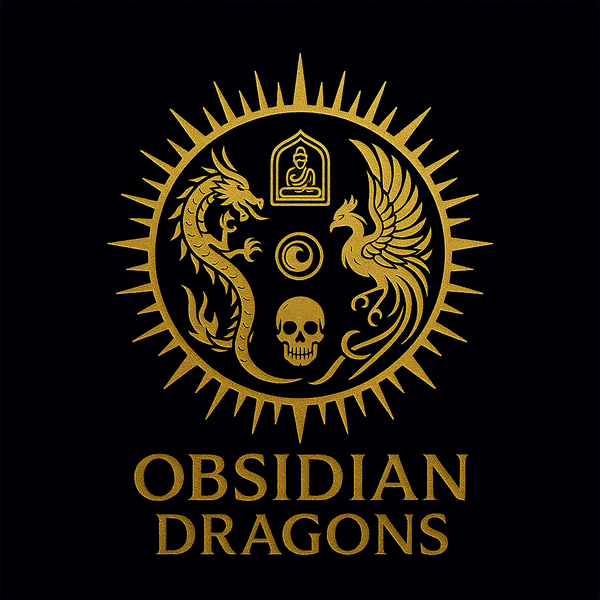obsidian dragons
Tibetan bone mala - traditional - old Ghau
Tibetan bone mala - traditional - old Ghau
Couldn't load pickup availability
Tibetan bone mala - traditional - old Ghau
Tibetan bone mala handcrafted with exceptional materials, mixing old and new materials. This Tibetan bone mala was made entirely by us, strictly respecting the ancient rules for making such tantric bone malas.
Dimensions of this Tibetan bone mala: 50cm long
Total weight 370 grams
As Malakara, we make all of our malas ourselves, scrupulously respecting tradition .
As a gemologist graduated from the National Institute of Gemmology in Paris, all our materials are appraised and certified.
This Tibetan bone mala consists of:
108 antique beads made from the bone of a domesticated yak (DZO), the quintessential bovine of the Tibetan highlands. These beads are flat and irregular, testifying to an ancient era, thus capturing the authenticity and tradition of artisanal creation.
Antique copper Ghau in finish containing a clay Tsa-Tsa , probably representing the Adhi-Buddha Vairocana. 
This ghau was probably consecrated since it contains prayers and mantras on fabric.
Dimensions of this ghau: 60mm high by 45mm wide by 21mm deep.
The ghau is a kind of portable altar in which the image of the chosen deity of the owner is kept, wrapped in silk clothes. The great majority of Tibetans use the ghau at home and carry it during their travels. They keep it on a real altar at home.
It serves as a protective symbol during travel and also allows its owner to demonstrate his devotion to his deity.
ADHI-BUDDHA VAIROCANA 
Buddha Vairocana is one of the major Buddhas in East Asia. He is one of the five wisdom Buddhas (the dhyani Buddhas) holding the central place on the cardinal points. In the conception of the five Tathagatas (Buddhas) of Mahayana and Vajrayana, Vairocana is at the center and is considered a Primordial Buddha or Adhi Buddha.
To learn all about the Buddha Vairocana, please consult our article dedicated to this Buddha, please click on this text
Above this ghau is the finishing bead or Guru bead closing this Tibetan bone mala 
It is made of buffalo bone and on it is engraved in relief the mantra of compassion "om mani padmé Hum"
Dimensions of this Guru bead: 26.38mm long by 19.56mm wide by 18.45mm deep.
According to Tibetan Buddhism, reciting the Chenrezi Om Mani mantra
Padme Hum, either aloud or inwardly, is an invocation to attention
benevolent and powerful of Chenrezig, the expression of the compassion of the
Buddha. To learn more about this famous mantra, please click on this text which will take you to our full article on our blog
The three counterpearls every 27 beads are also made of carved buffalo bone and are 20 mm in diameter.
On each side of this Tibetan bone mala, we have added the counters, specific to Tibetan malas.
These counters are used to track the number of complete cycles of mantra recitation. 
These two counters are made up of 10 18K gold-plated copper rings
Under these 10 rings are placed the Buddhist worship instruments dorje and drilbou (Tibetan bell), also handcrafted in buffalo bones
Dorje (or Vajra) : The dorje is an important symbol in Tibetan Buddhism, representing the indestructible nature of the awakened mind. It is often used as a symbol of stability and spiritual power. When used as a counter, it can represent the completion of a cycle of 10 mantra recitations.
Bell (or Drilbu): The bell, or drilbu, is also a significant symbol in Tibetan Buddhism. It represents transcendent wisdom and is often associated with the feminine and emptiness. When used as a counter, it can symbolize the completion of a cycle of 10 mantras .
Finally, we added on the side of this Tibetan bone mala, a handcrafted representation of a citipati carved in buffalo bone , decorated with a traditional yellow and black tassel. 
Dimensions of this bone plaque representing a citipati: 56.79mm high by 32.03mm wide by 15.60mm deep
CITIPATI DIVINITIES
The Citipati, also spelled Chitipati, is a deity or pair of deities in Tibetan Buddhism, associated with the worship of protective deities. Citipati is usually represented by a pair of dancing skeletons.
The Citipati are considered as protective deities or guardians, invoked to ensure spiritual safety and protection of Buddhist teachings.
Their appearance symbolizes the impermanence and transient nature of life. This refers to meditation on death and the acceptance of impermanence as a fundamental aspect of existence.
Their dance is interpreted as a sacred dance symbolizing victory over ignorance and ego , as well as transcendence of dualistic concepts and understanding of the non-material essence of mind.
The Citipati are associated with the practice of tantra, an advanced form of meditation and ritual in Tibetan Buddhism. Their worship is integrated into specific tantric rituals to achieve higher states of consciousness.
Citipati are associated with cremation grounds. They are considered guardians of cemeteries and have a connection with funerary practices and meditation on death.
TASSEL:
Although its primary role is aesthetic, it can also have symbolic meanings in the spiritual context of the mala.
The tassel represents the cosmic energies that emanate from the bone mala, bringing blessings and positive vibrations to the wearer of the mala.
The tassel helps maintain an energetic balance in this bone mala, thus ensuring harmony between the beads and the spiritual energies.
TIBETAN BONE MALA:
A Tibetan bone mala is made using authentic traditional methods. The use of bone is rooted in the long history of Tibetan craftsmanship.
Bones have symbolic meaning in Tibetan culture. They represent life, death, and transformation, themes explored in Tibetan Buddhist spirituality.
The beads of a Tibetan bone mala have a unique texture and a natural appearance, rustic and artisanal aesthetic. A Tibetan bone mala is always unique.
Tibetan bone mala, Tibetan bone mala, Tibetan bone mala, Tibetan bone mala, Tibetan bone mala, Tibetan bone mala, Tibetan bone mala, Tibetan bone mala, Tibetan bone mala, Tibetan bone mala, Tibetan bone mala, Tibetan bone mala, Tibetan bone mala, Tibetan bone mala
Share
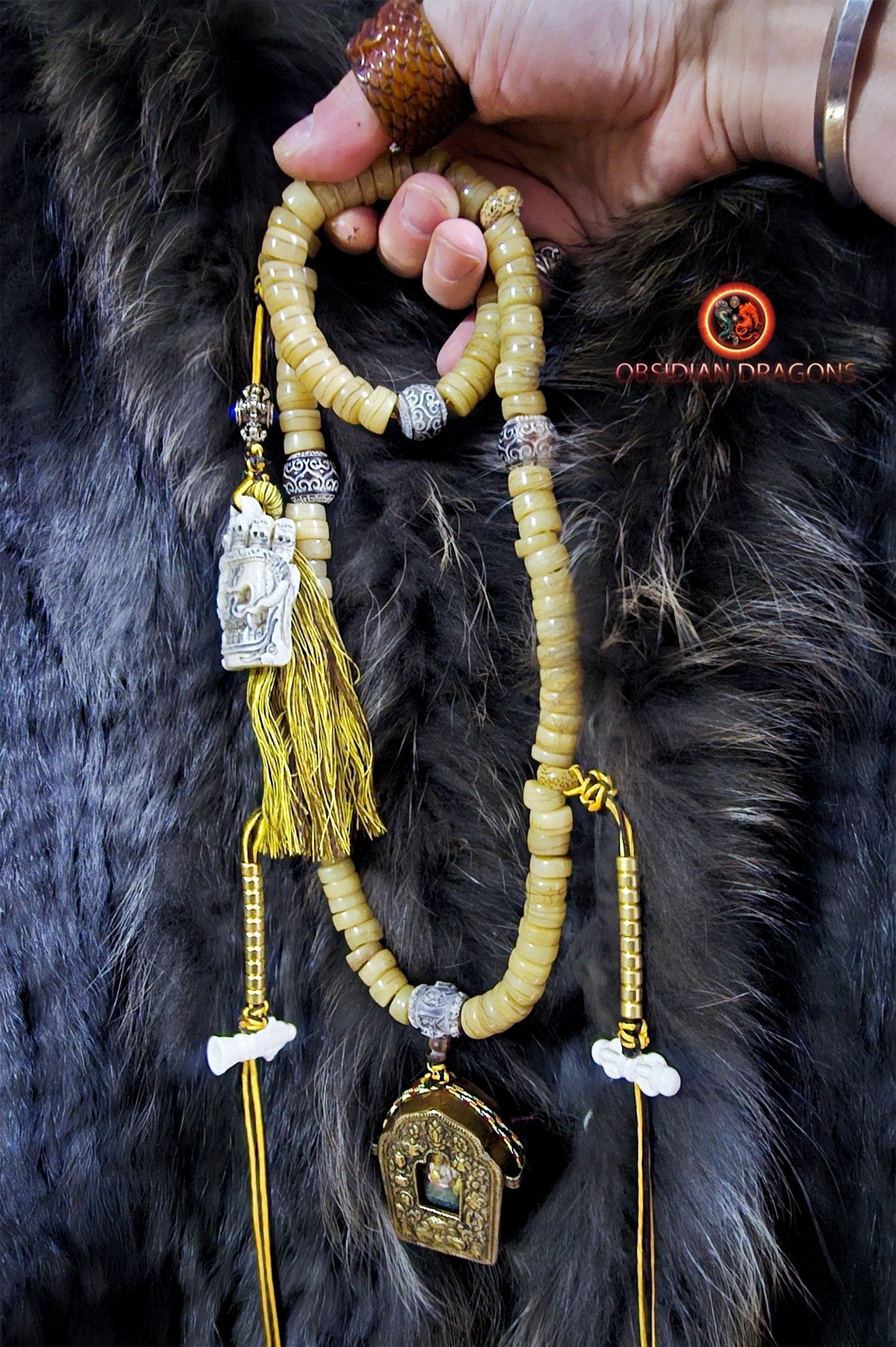
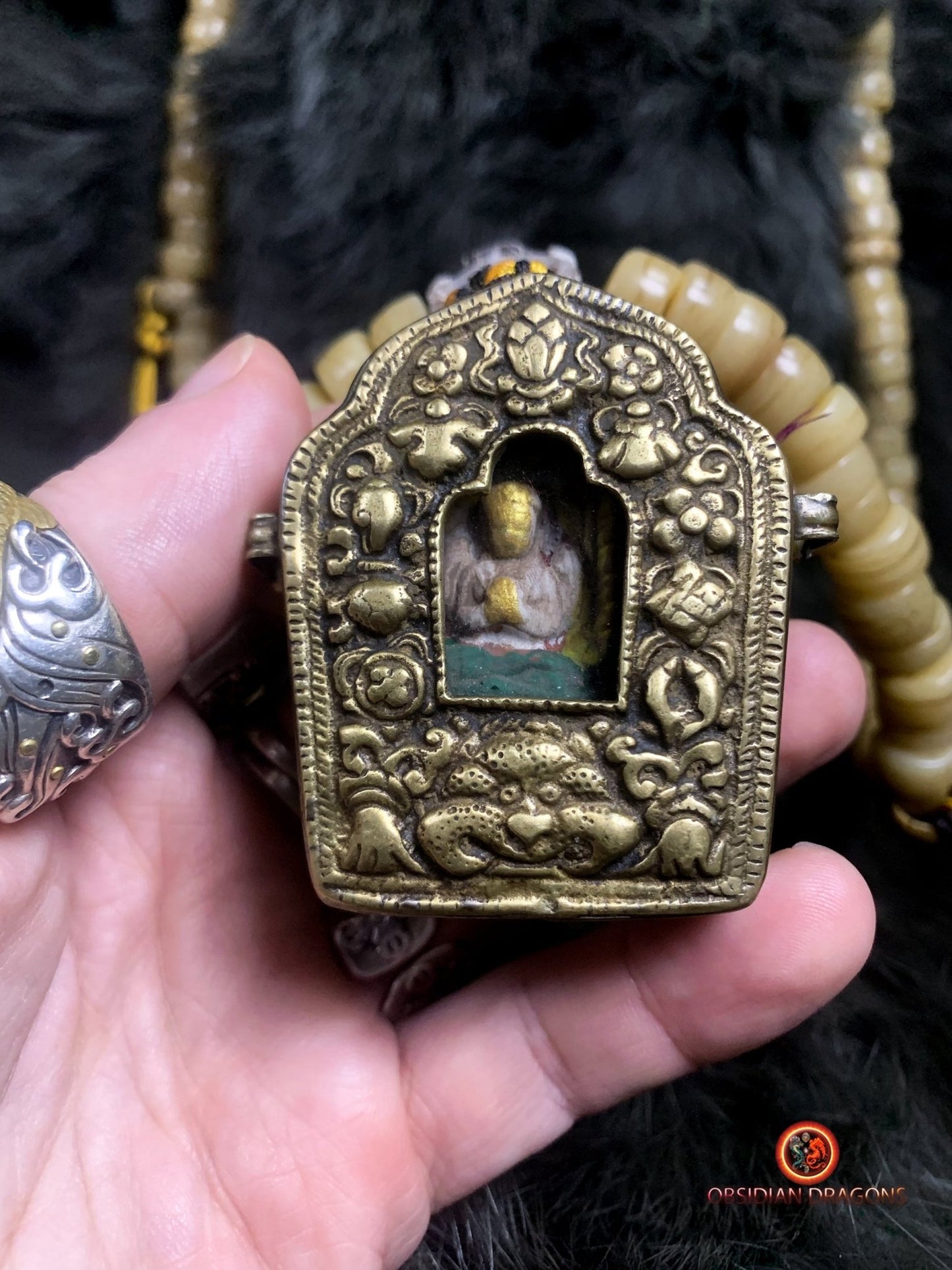

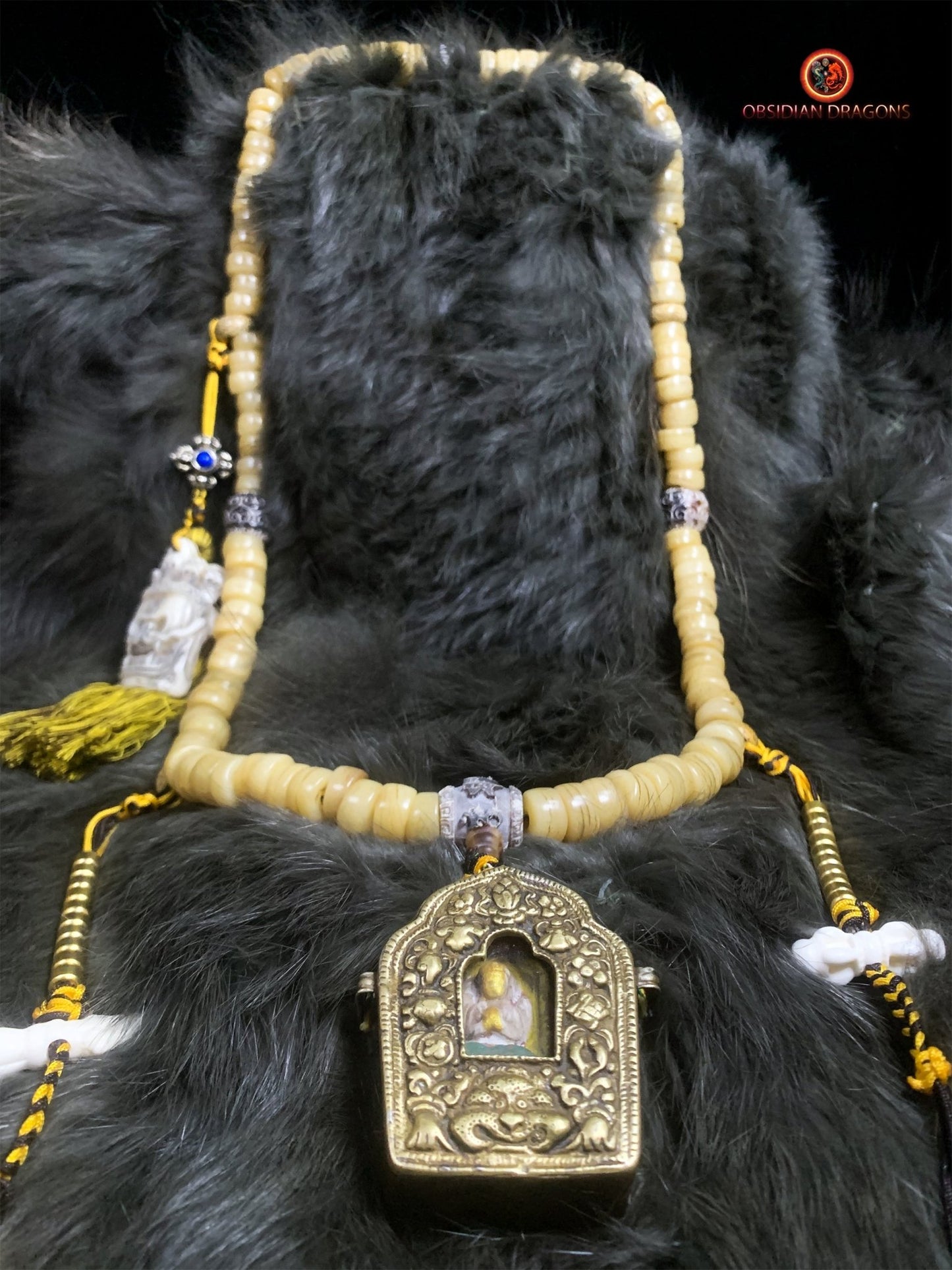
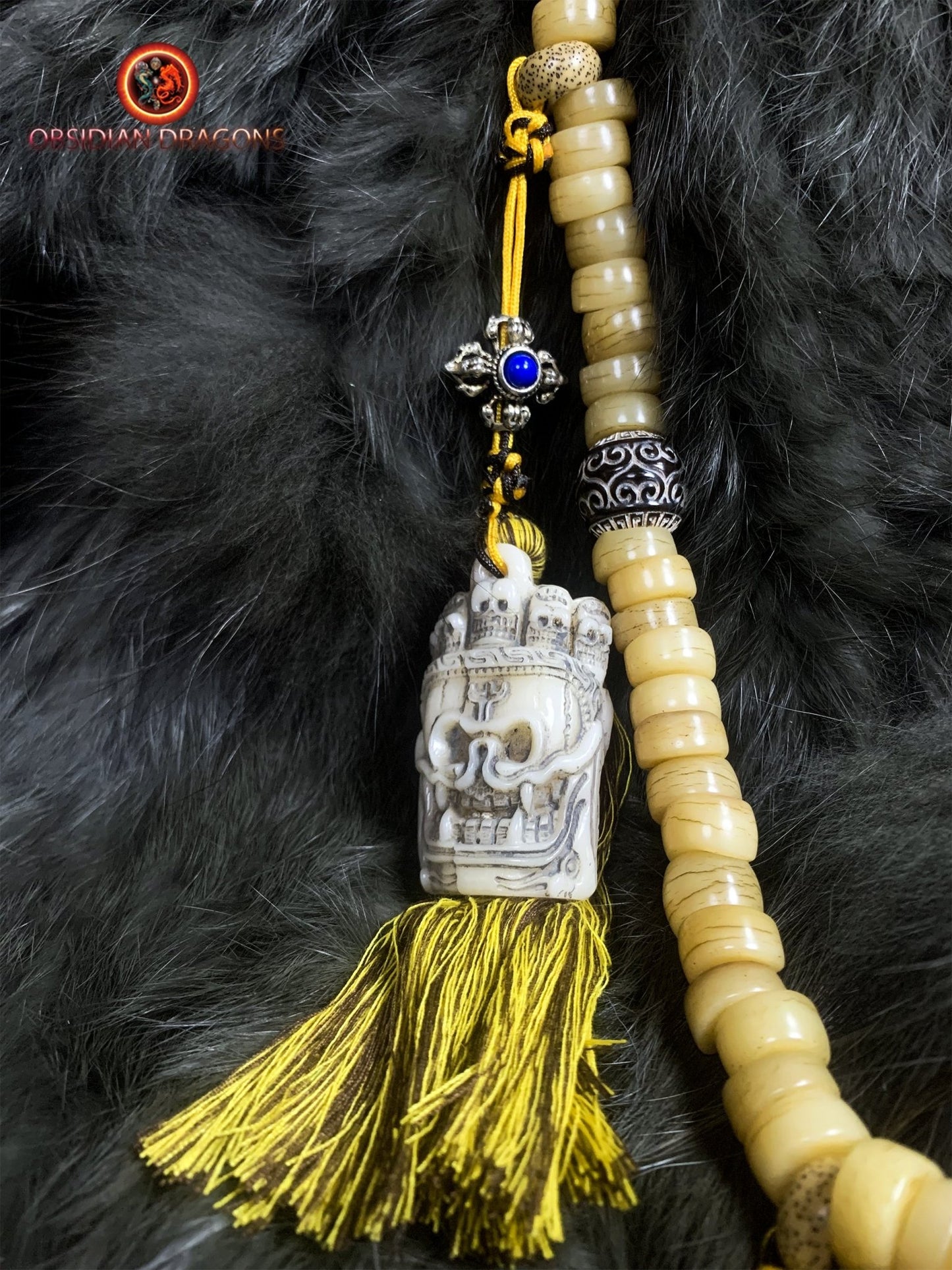

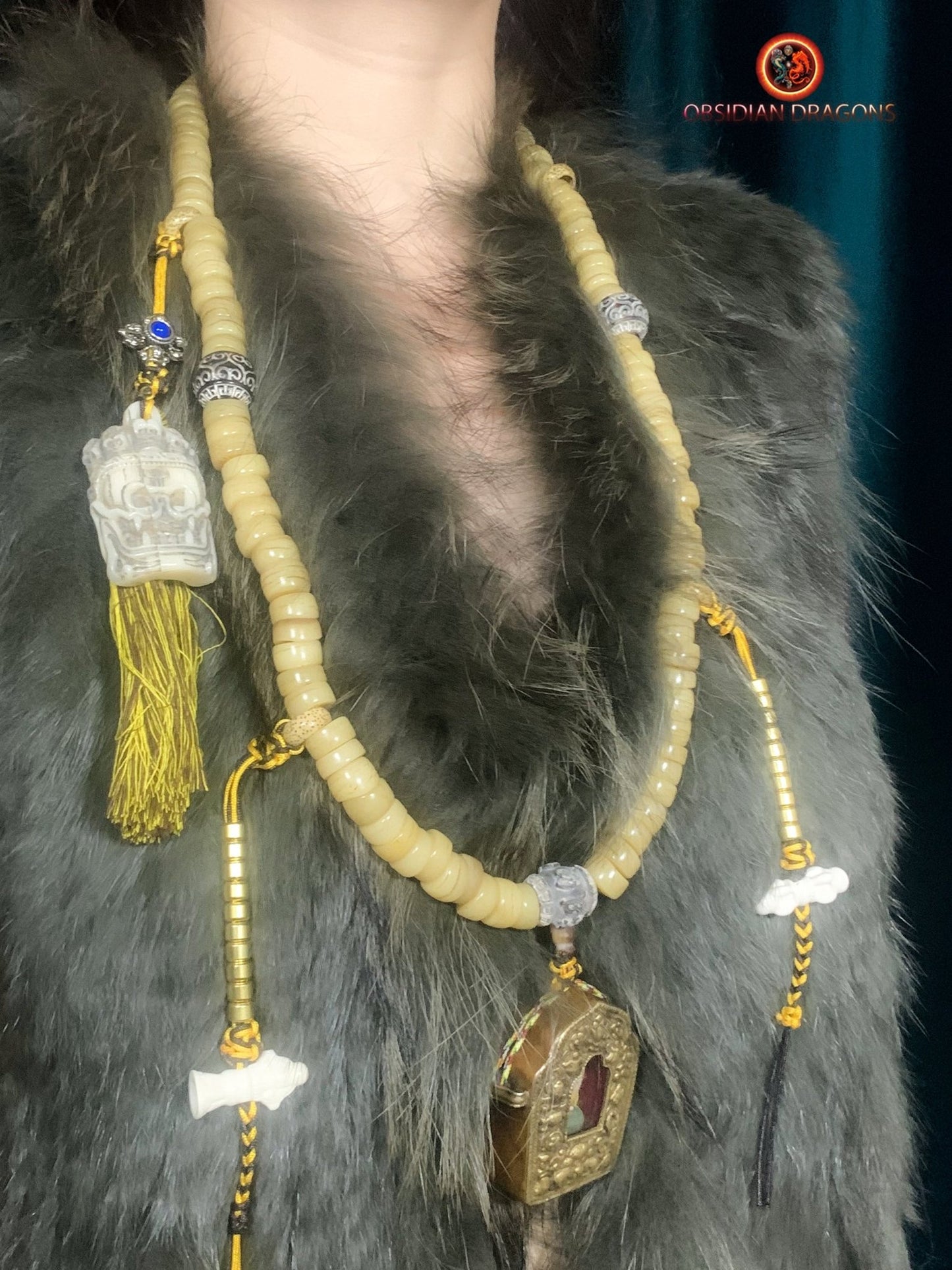
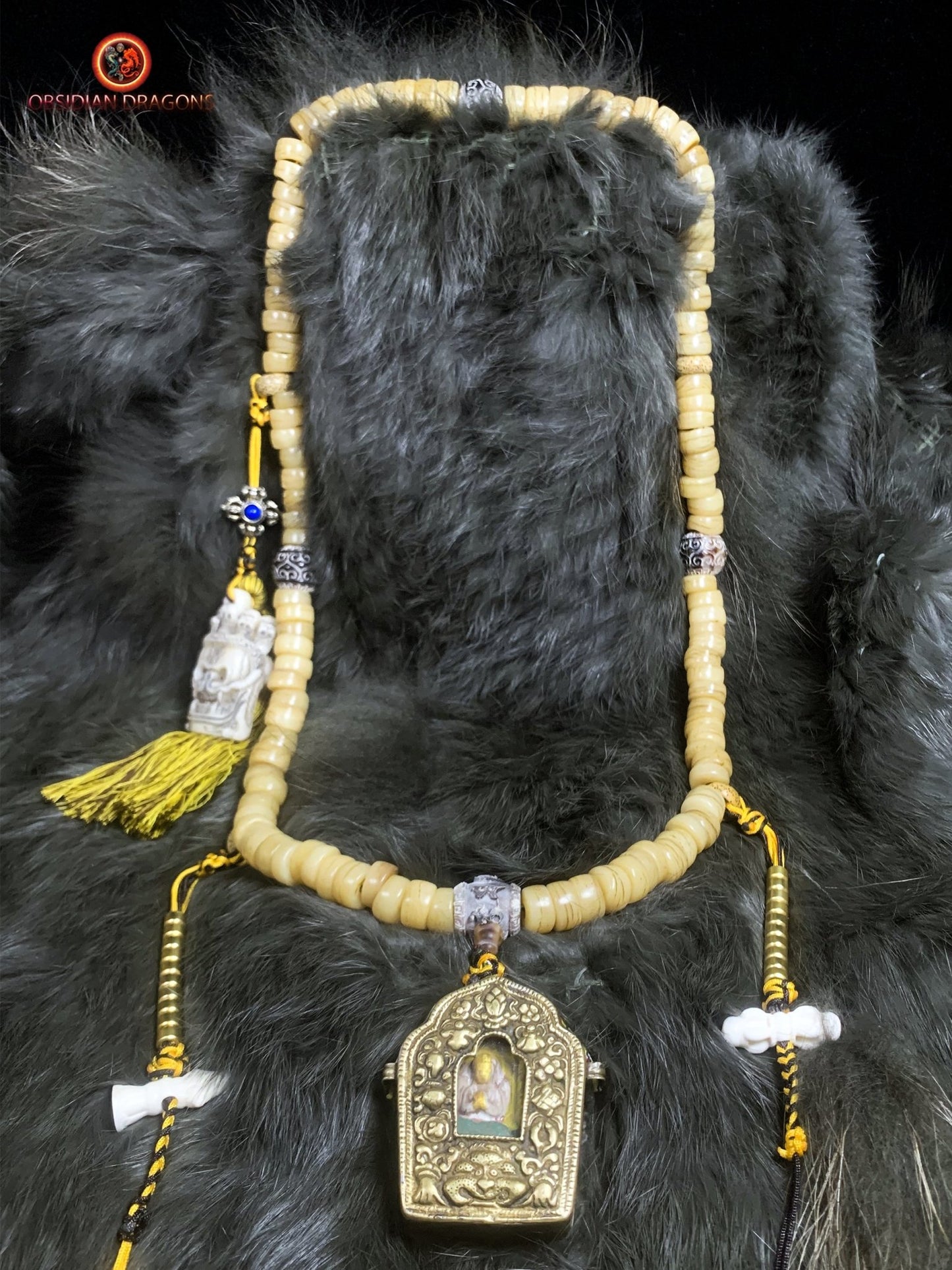
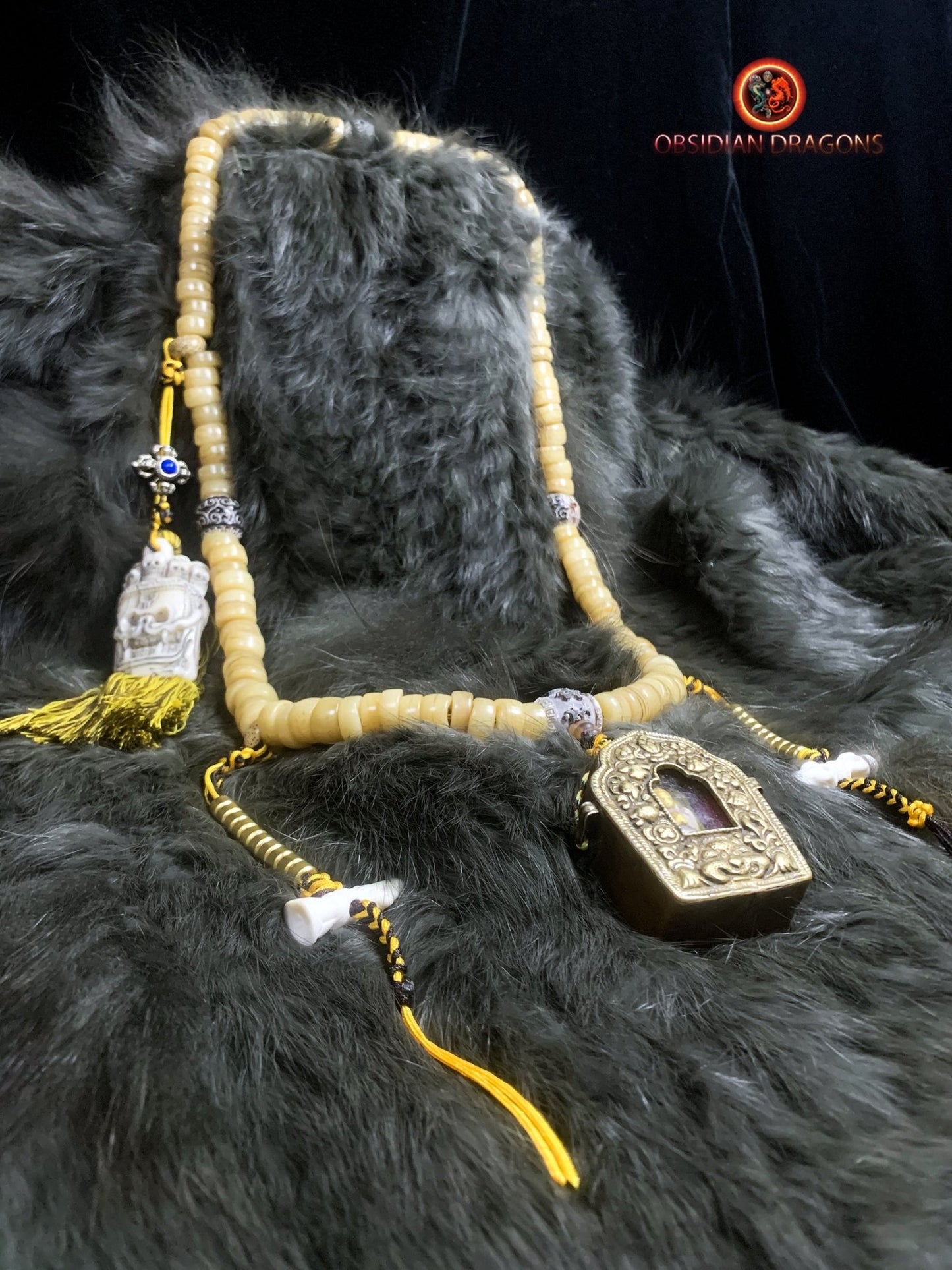
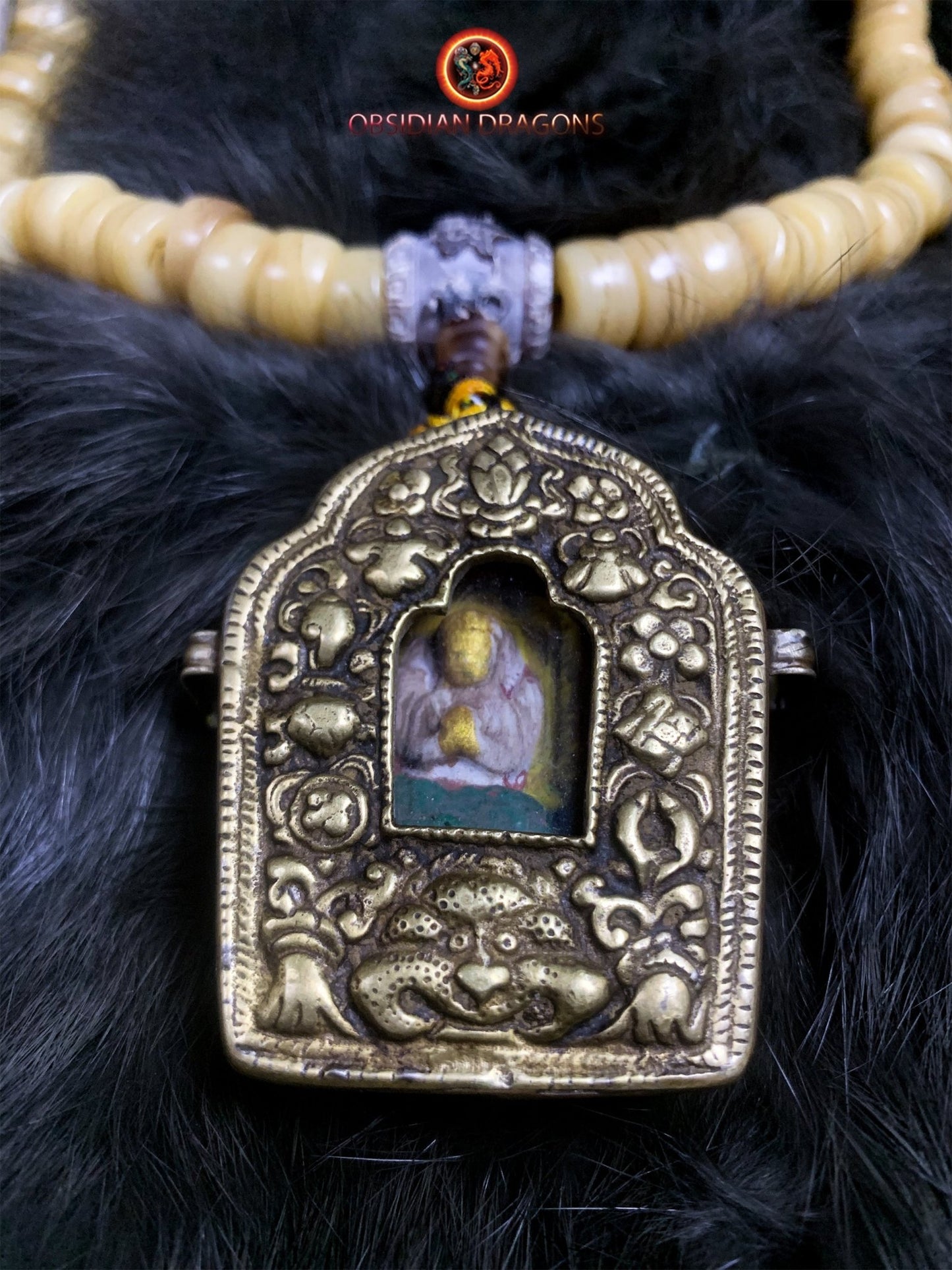
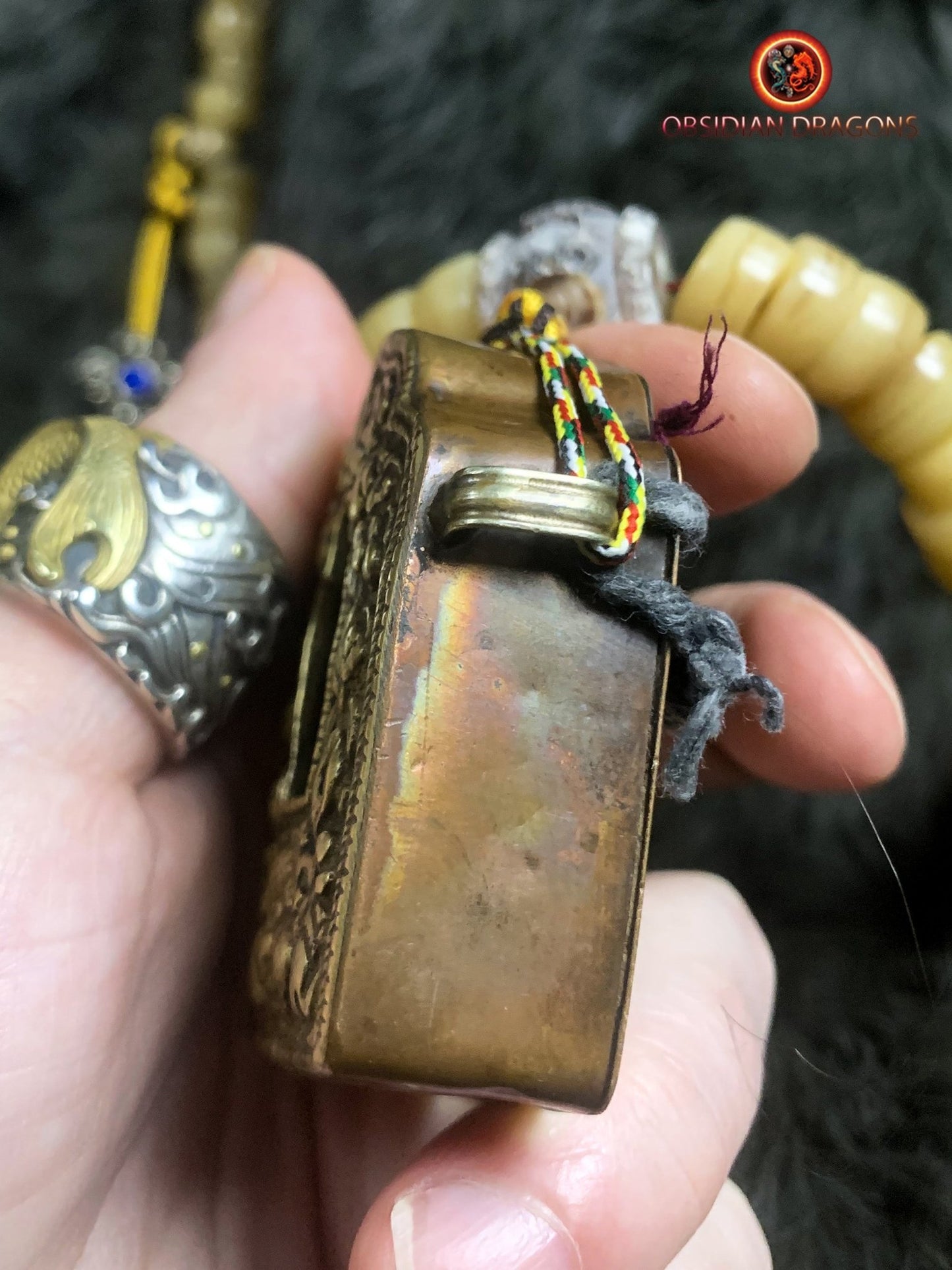
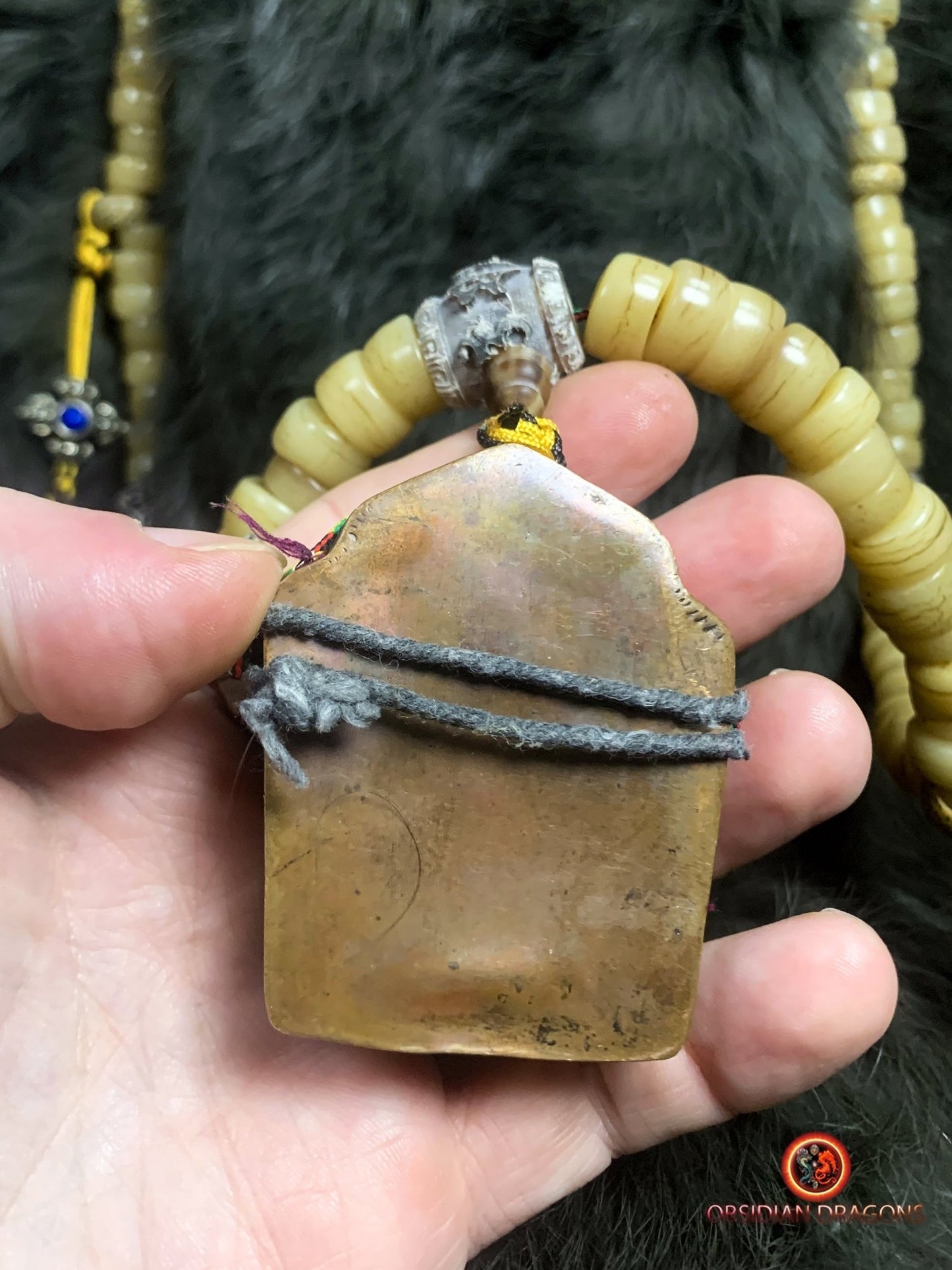
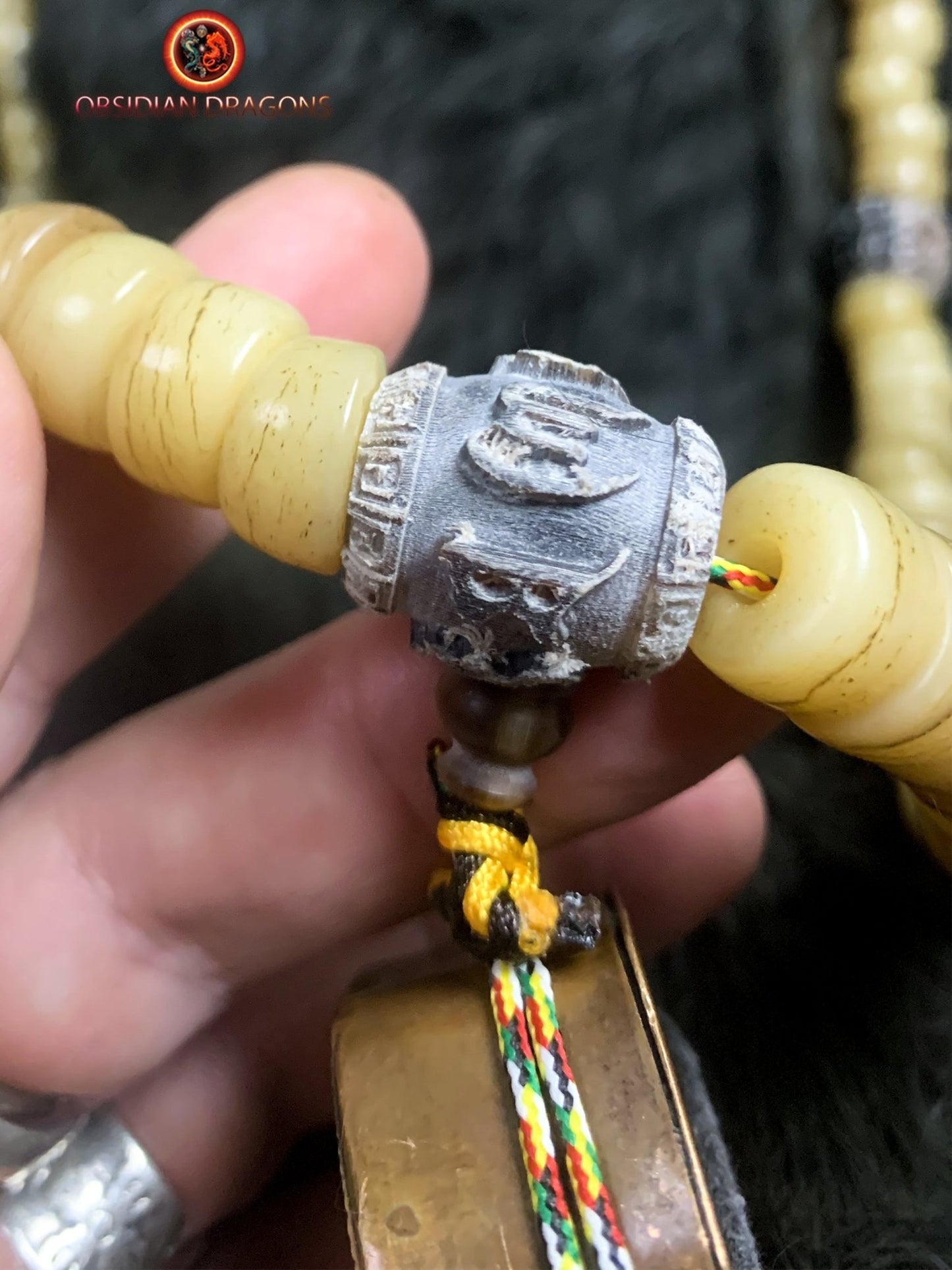
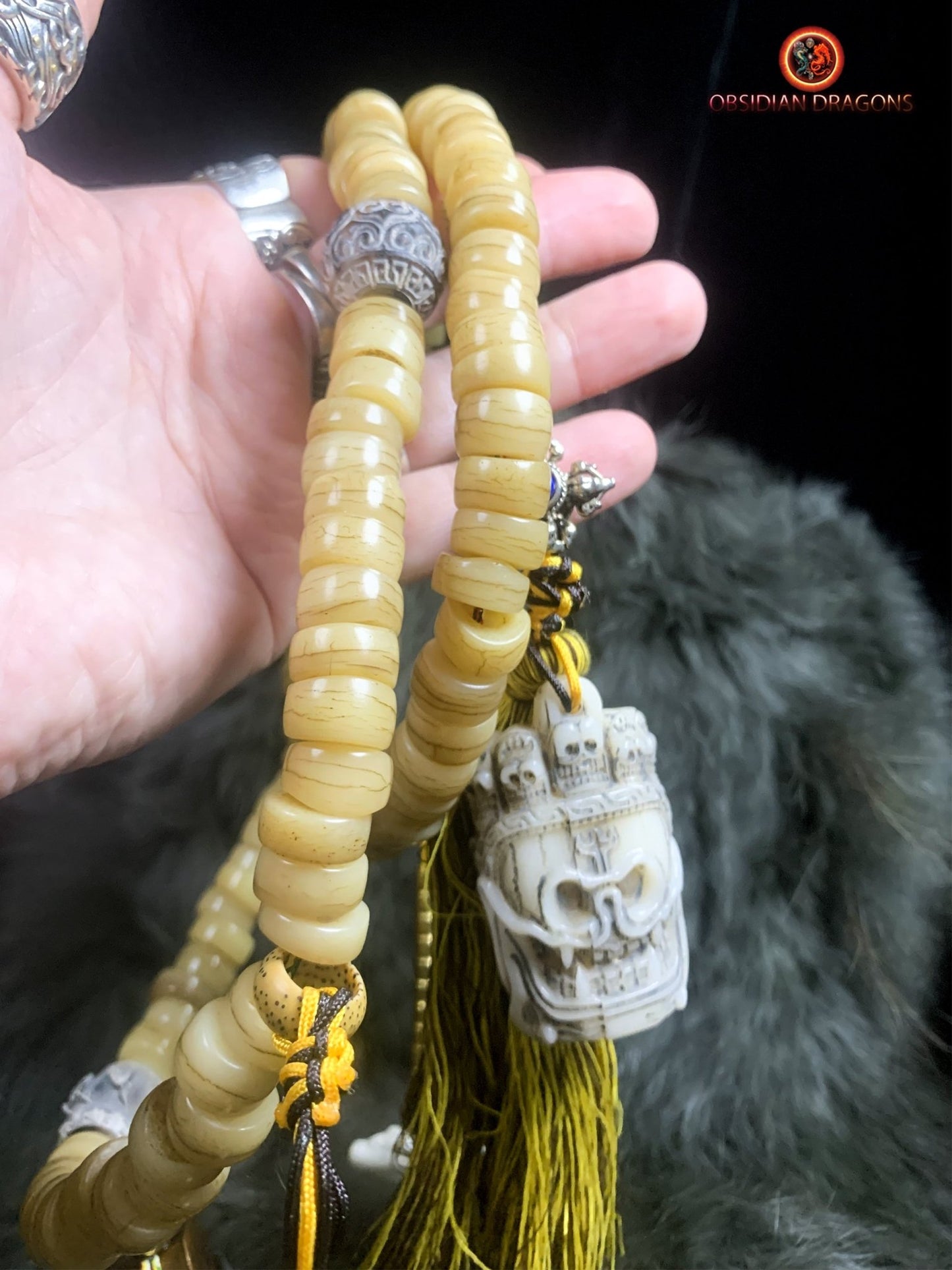
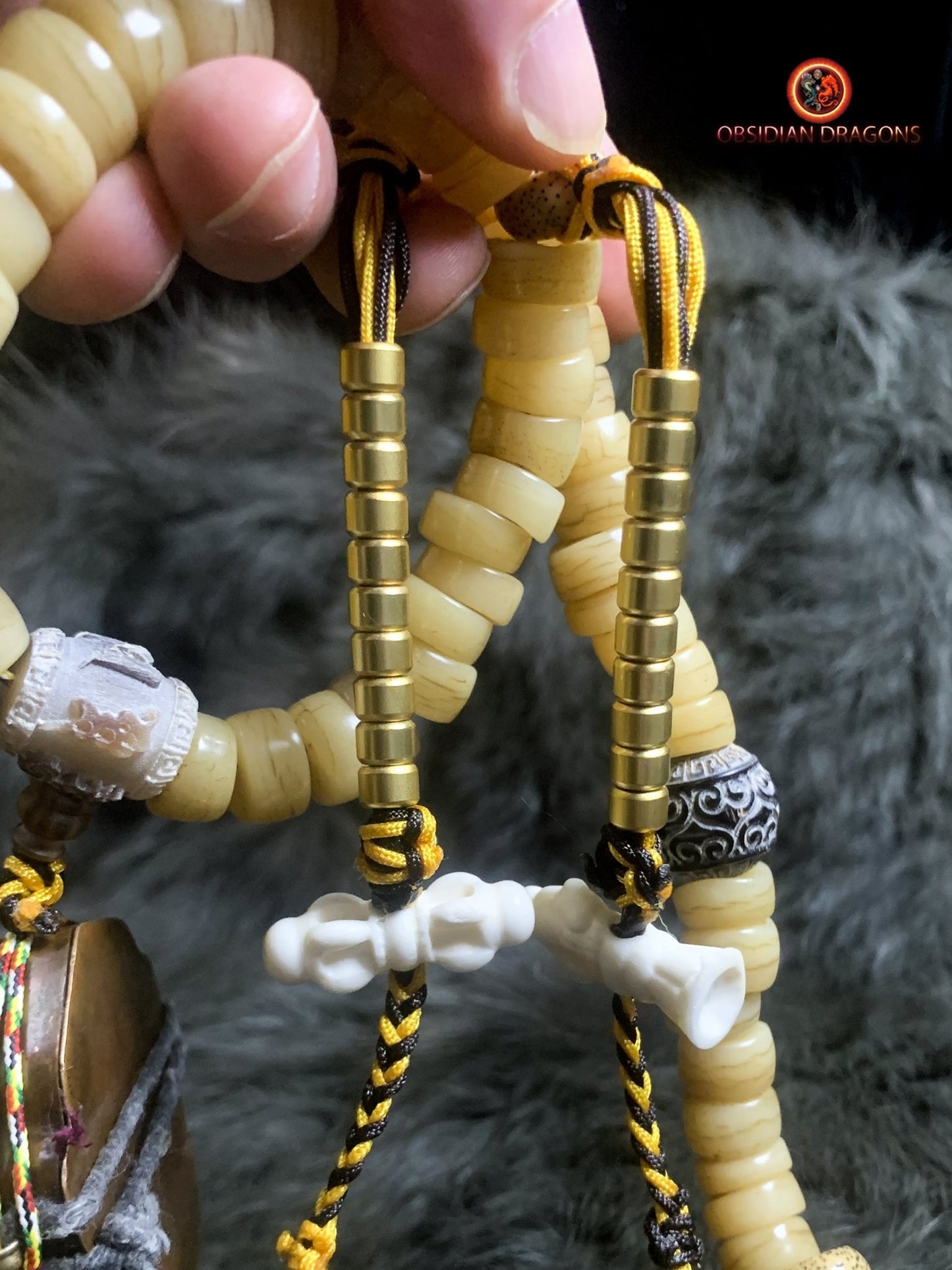
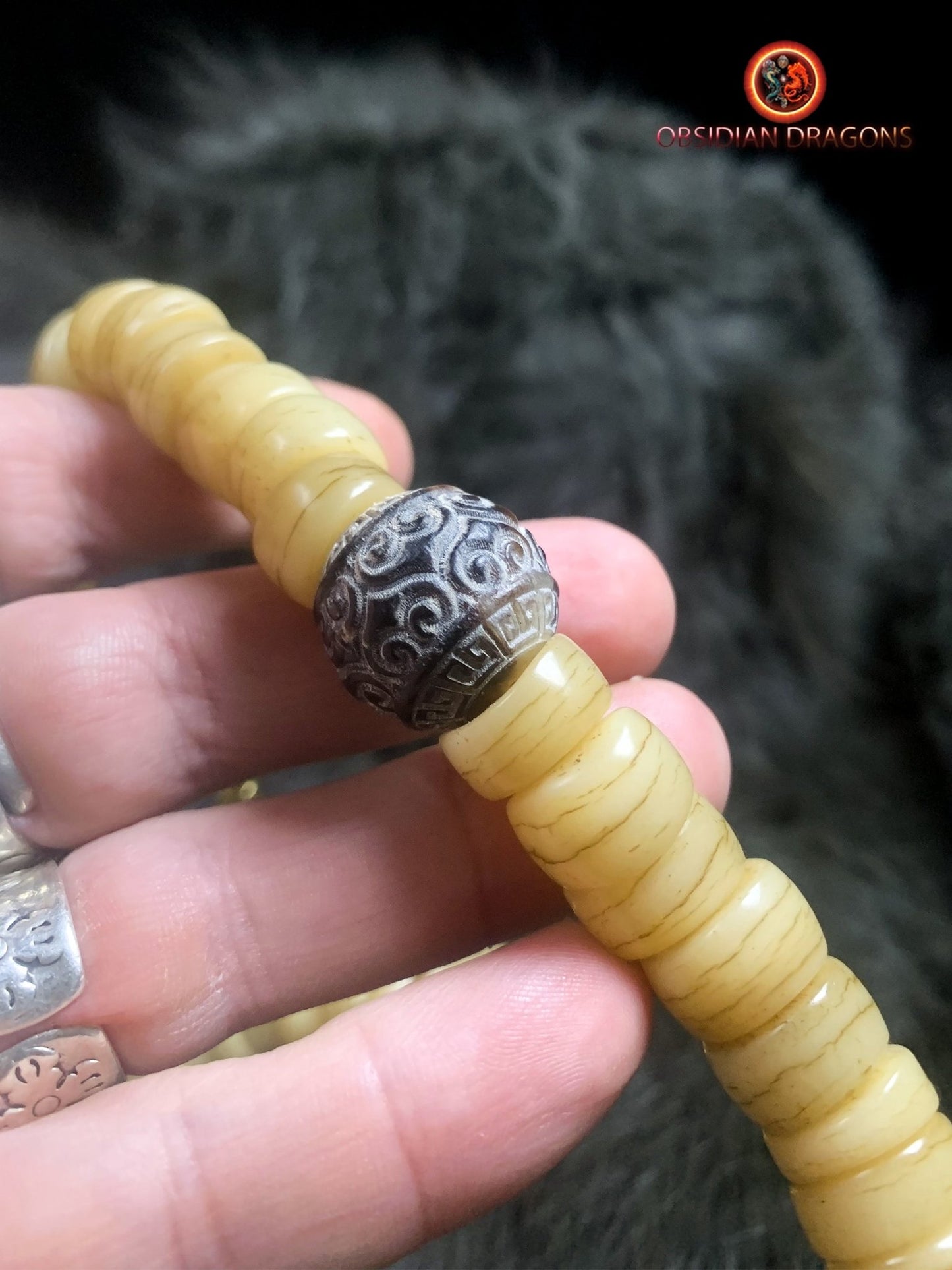

Return conditions for a Zen purchase
We offer you a money back guarantee within 14 days after delivery of your order.
If you are not completely satisfied with your purchase, please contact us to arrange a return of the product and a refund.
Except for returns, shipping is free on all orders.
Multi-column
Button text-
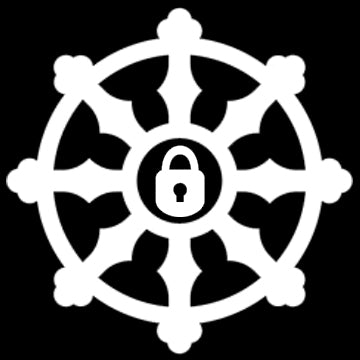
100% secure payment
3 times interest-free option with Scalapay
-

Free delivery in France and internationally
14 days money back guarantee after delivery (see our conditions of sale)
-

Column
Excellent customer service
Live chat
Whatsapp +33674049312
Let customers speak for us
from 917 reviews4eme pièce que j'achète et encore une fois, jamais déçue de l'unicité et de l'originalité. Coup de cœur pour ce bracelet en magnifiques molaires de mammouth, charge de vie et d'histoire. Attention pour un tout petit poignet de fille comme le mien cela peut être trop grand. N'hésitez pas à poser la question à Jeremy sur les tailles, il répond toujours et il est très réactif.

Déjà j’au été très impressionné par la qualité du site web pour tout chercheur de vérité mais également pour la disponibilité de Jérôme qui a su dépasser mes plus grandes attentes pour la commande sur mesure d’un mala en Obsidienne Œil Céleste – Dragon & Bagua Feng Shui. Gràce à ce puissant talisman je peux désormais continuer ma route sereinement. Un très grand merci sincèrement.

magnifique, puissant et apaisant, il m'aide à garder mon calme je le trouve absolument parfait!

J'ai eu l'occasion de rencontrer Jérémy sur Paris avant l'achat...très bon contact avec lui ..il sait de quoi il parle...je suis revenu vers lui pour l'achat de cette magnifique statue...elle a été emballee avec beaucoup de soin pour une expédition de chine... vraiment très satisfait de cet achat..merci

Pendentif dragon en obsidienne œil céleste - Symbole spirituel

Le collier est superbe, et ce pendentif magnifique, ses détails! et l'odeur du bois de santal que c'est agréable! Qualité extra! Contact excellent avec Jérémy, merci beaucoup pour votre gentillesse! Quelle qualité, vivement le mala !

L'objet est très joli et malgré que je ne sois pas un spécialiste, je trouve que le crystal est beau. Il n'est pas parfait et cela me rassure sur la qualité du produit qui est sensé être naturel donc imparfait.
Très bien emballé et en plus housse de rangement offerte.
MERCI

J’ai commandé un crâne de dragon, il est super beau et très puissant. Je l’adore 😍 Et l’envoi a été très rapide 🤗 merci 🙏🏻

bracelet puissant, je suis content de mon achat

Cet artisan est gémologue, il travaille avec des artisans qui sont des vrais artistes, je suis bluffé par la qualité des ouvrages sur l’argent et sa qualité. Quand à la qualité des pierres pas besoin d’être gémologue pour voir la qualité exceptionnelle des pierres, encore une fois le travail de sculpture est exceptionnel.
Mon mala traditionnel est une pure merveille dans la tradition originelle. Le ghau est une merveille qui me comble.
Bref que dire de plus :). Allez sur son site.
PS : vendeur qui connait son métier et les traditions bouddhistes ce qui est un plus en plus :)

Ce crâne est un Etre de Lumière. Attirant , inspirant , "parlant".
Il est un Ami qui tire mes pensées vers le Haut.
Ses énergies vibrent à des fréquences élevées. Il est puissant dans la douceur.
Un crâne de Dragon m'assite également. Merveilleux !

Très beaux bracelet et très puissants

Magnifique crâne givré de l'Himalaya.

cette chevalière est tres bien réalisé, avec beaucoup de détails, je suis heureux de l'avoir

Cet artisan est gémologue, il travaille avec des artisans qui sont des vrais artistes, je suis bluffé par la qualité des ouvrages sur l’argent et sa qualité. Quand à la qualité des pierres pas besoin d’être gémologue pour voir la qualité exceptionnelle des pierres, encore une fois le travail de sculpture est exceptionnel.
Mon mala traditionnel est une pure merveille dans la tradition originelle. Le ghau est une merveille qui me comble.
Bref que dire de plus :). Allez sur son site.
PS : vendeur qui connait son métier et les traditions bouddhistes ce qui est un plus en plus :)
